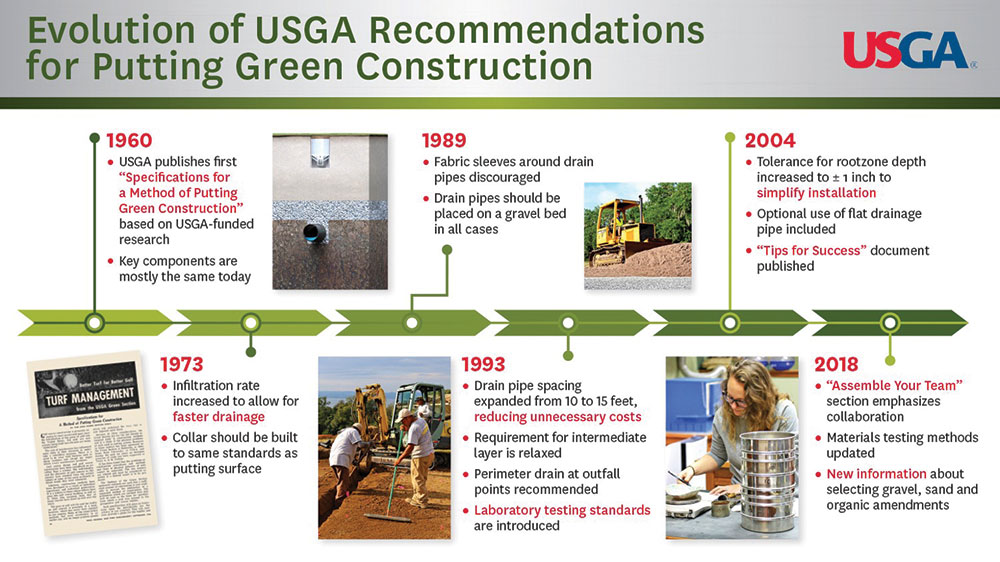A conversation with Brian Whitlark, USGA
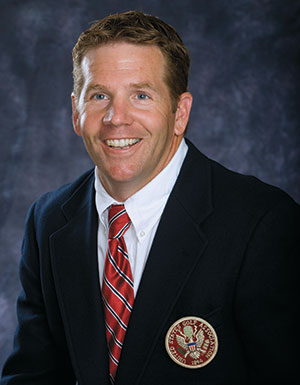
Brian Whitlark
Brian Whitlark knows his soils.
A certified professional soil scientist, Whitlark joined the USGA Green Section staff as an agronomist for the West Region. Specializing in courses that face challenging soil and water conditions, he regularly consults for courses in Arizona, Nevada, California, New Mexico and Mexico. The University of Arizona grad (B.S. and M.S. from the Department of Soil, Water and Environmental Science with an emphasis on turfgrass science) is also a regular writer for USGA publications and is a highly sought after conference speaker.
Whitlark worked alongside several USGA staff members and a host of industry representatives to update and revise the USGA Recommendations for a Method of Putting Green Construction. We recently sat down with Whitlark to discuss these new updates, how they will change greens being built in the future and what might be even further down the road for the next update.
Whitlark invites Golfdom readers to contact him with any additional questions at bwhitlark@usga.org.
Golfdom: Brian, thanks for taking the time. First off, why was there a need to update the recommendations?
Whitlark: The USGA updates and revises the Recommendations for a Method of Putting Green Construction about every 10 years. We had four major objectives for this revision: Review and evaluate new technology that could be used to construct a green and test the material suitability; Improve the information for end users with a focus on how to select the root zone mixture; Keep in place the main advantage of the method of putting green construction that can be used in a wide range of growing conditions; Consider alternative materials and methods that could be used in putting green construction.
The latest USGA Recommendations for a Method of Putting Green Construction are available online. (Editor’s note: view the updated document here.)
Golfdom: What was the process used to update the recommendations and who was involved?
Whitlark: We started the 18-month process with the philosophy that we needed to hear from all people involved in putting green construction. To do that, we reached out to university scientists actively engaged in putting green construction research, staff from international and U.S.-accredited soil testing labs, golf course builders, golf course architects, superintendents, USGA agronomists and USGA Research Committee members.
We held numerous online meetings so people could express their ideas, concerns and questions. After the meetings, all input was summarized and provided to Norm Hummel, Ph.D., who wrote the revised recommendations. The recommendations went through several cycles of review before being released to the public.
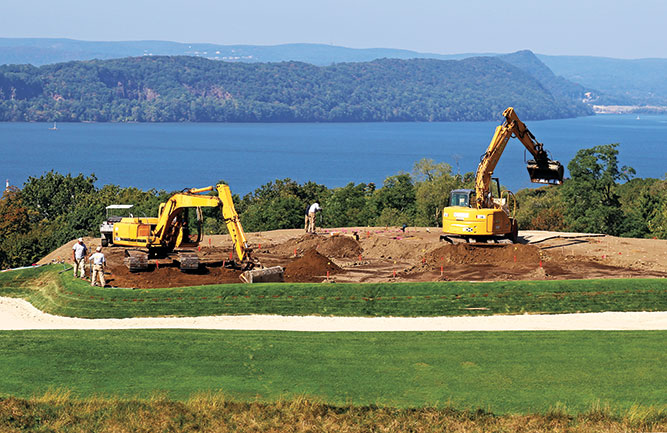
The USGA took 18 months updating the Recommendations for a Method of Putting Green Construction. The recommendations include updates in several areas, including drainage and gravel layer construction.
Golfdom: What are the major changes in this version of the recommendations compared with the previous version?
Whitlark: The recommendations are broken down into eight steps. The key changes by section are:
1. Assemble your team
We stressed the importance of assembling a team of professionals with expertise in specific disciplines. Building putting greens should not be reliant on a single person. The team needs a leader and ultimate decision maker, but advice from an architect, builder, superintendent and others needs to be considered. Based on the unique characteristics of every site, professionals such as a soil physicist or civil engineer may be included on the team as needed to address specific challenges.
2. The putting green cavity and subgrade
There are no major changes in this step.
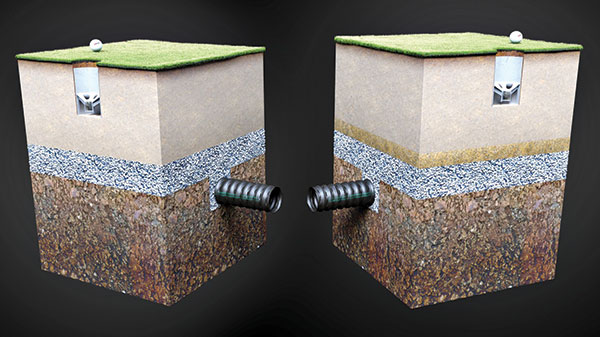
USGA profile without and with interim layer.
3. Drainage
Cleanout ports should be installed at the highest and lowest points of all drainage lines.
Place a perimeter (smile) drain inside the putting green cavity directly against the cavity wall at all low points where water may collect, and not only at the lowest point of the green, which is typically the front of the green.
4. Gravel and intermediate layer
The wicking barrier is optional.
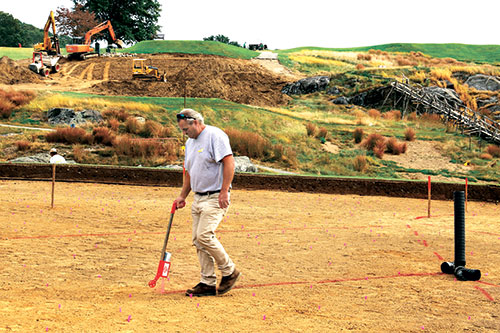
Cleanout ports should be installed at the highest and lowest points of all drainage lines, and there is a now a single, improved test for gravel stability.
Two tests for the stability of gravel for the gravel layer were eliminated and replaced with a single, improved test for gravel stability.
The recommendations acknowledge the slight possibility that iron oxide may precipitate at the interface of the root zone mixture and gravel layers, reducing drainage. Iron oxide may precipitate at the interface of the root zone mixture and gravel layers when the root zone mixture is acidic, the gravel is neutral or alkaline and iron is added to the system through the irrigation water or fertilization.
There are no known solutions to prevent the precipitation of iron oxide under the conditions I just described, or for dissolving the iron oxide precipitate should it form. The USGA currently is funding a study aimed at finding solutions to this issue.
5. The root zone mixture
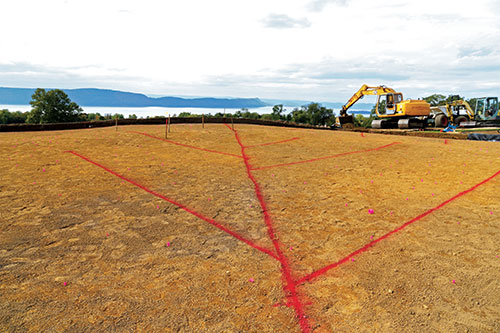 An improved explanation was added to help end users select the components for the root zone mix with the goal of helping end users customize the root zone mix to local conditions while still following the recommendations.
An improved explanation was added to help end users select the components for the root zone mix with the goal of helping end users customize the root zone mix to local conditions while still following the recommendations.
Coefficient of uniformity (CU) was added to the recommendations. The CU ranges are 1.8 to 3.5 for root zone mixtures with peat, and a CU of 2.0 to 3.5 for root zone mixtures of sand only or sand with an inorganic amendment. It’s thought that a root zone mixture with a higher CU will be firmer. This allows a golf course to customize the root zone mixture within the recommendations for a course’s individual preference. Keep in mind sand shape also plays a major role in root zone mixture firmness.
There is an expanded discussion on quality control testing.
6. Root zone installation
The potential for the root zone mixture to settle along the edges of the green has been identified as a problem. It’s difficult for the large equipment used to spread the root zone mixture in the cavity to firm the mixture along the edges of the green. Therefore, small hand-operated vibratory packers are needed to firm the mixture along the edge of the green.
7. Pre-plant preparation and establishment
Recognize that turf on the green can be established using seed, sod or sprigs.
8. Grow-in
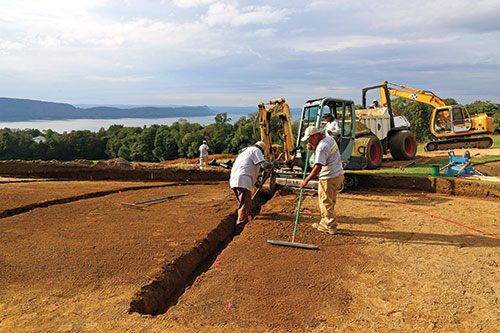 Grow-in procedures vary depending on local conditions and are covered in the Tips for Success document. (Editor’s note: view the Tips for Success.)
Grow-in procedures vary depending on local conditions and are covered in the Tips for Success document. (Editor’s note: view the Tips for Success.)
Golfdom: How do you think the changes will impact the construction and performance of putting greens?
Whitlark: The original intent of the USGA recommendations was that they could be used successfully under a wide range of conditions. This original intent and integrity of the recommendations remain intact.
The revisions will allow more customization within the recommendations to address local conditions. Tolerances for materials have increased, which continues the trend of the last few revisions.
A golf course does not have to build greens following the USGA recommendations to be successful. It’s possible to use local materials and an alternate method to build putting greens. In these situations, use the scientific principles presented in the recommendations and the expertise of USGA agronomists to guide the process without sacrificing putting green quality or performance.
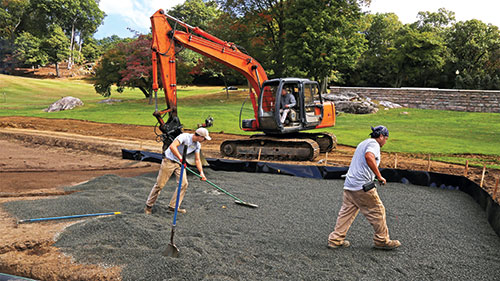 Golfdom: What aspects of putting green construction need more research before they can be considered for inclusion in the recommendations?
Golfdom: What aspects of putting green construction need more research before they can be considered for inclusion in the recommendations?
Whitlark: We identified several things in our revision process that we just don’t know enough about to include in this update. We hope research can be conducted that will help answer these questions. Some of those things identified were: variable depth root zone mix construction; interface of the green cavity and green surround; interface of the green cavity and the approach; iron oxide layers; the pros and cons of the wicking barrier; the integrity and longevity of geotextile fabrics that potentially could be placed over a locally sourced — and we hope cheaper — gravel layer; and cheaper alternatives for gravel.
Golfdom: Is there anything else you would like to add?
Whitlark: The USGA Recommendations for a Method of Putting Green Construction are a living, breathing, dynamic document. We plan to update the recommendations as new infor-
mation becomes available. Technology allows us to easily make changes to the documents and to widely disseminate the new recommendations.
All photos: USGA






